In the intricate world of knitting, the concept of the “right side” holds significant importance. It is the side of a knitted fabric that is intended to be the front or outward-facing surface, showcasing the intricate patterns, stitches, and designs.
Whether you’re creating cozy scarves, intricate sweaters, or delicate lace shawls, understanding which side is the right side is fundamental to achieving the desired aesthetic.
The right side reveals the craftsmanship and effort invested in a knitting project, while the opposite side, known as the wrong side, often remains hidden.
This distinction guides knitters in following patterns, assembling garments, and ensuring their handcrafted creations are nothing short of perfection.
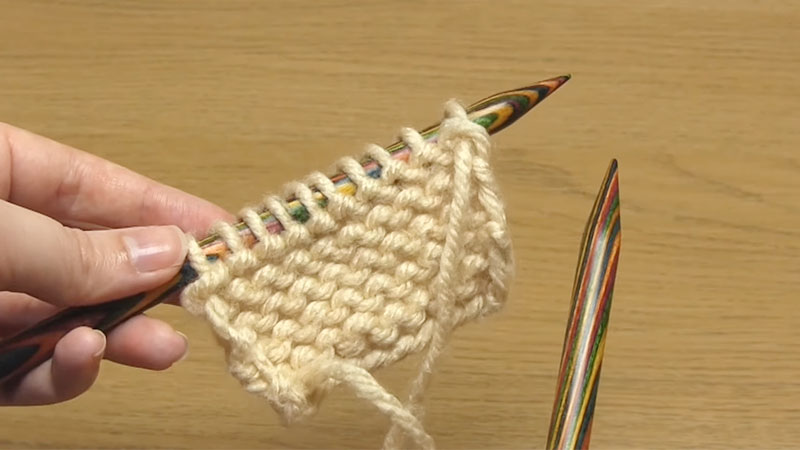
What Is the Right Side in Knitting?
In knitting, the term “right side” refers to the side of the fabric that is intended to be the public or outward-facing side of your project. It is the side that is meant to be visible when you wear or display your knitted item.
Understanding which side is the right side is essential in following knitting patterns and achieving the desired appearance for your project.
Here are some key points to help you understand the concept of the right side in knitting:
Texture and Design
Many knitting patterns create texture, patterns, or designs that are more prominent on one side than the other. The side with the more pronounced design is typically considered the right side.
This is the side that showcases the pattern’s intended look, whether it’s a cable, lace, or colorwork design.
Stockinette Stitch
In the most basic knitting fabric, known as stockinette stitch, the right side is the smooth, “V”-shaped side of the fabric.
This is created by knitting one row and purling the next row (or by using circular knitting where you knit every round). The side with the “V” stitches is the right side, and the opposite side is called the wrong side.
Garter Stitch
In the garter stitch, where you knit every row, there isn’t a significant visual difference between the two sides.
However, some knitters prefer one side over the other for the right side based on personal preference or project requirements.
Pattern Instructions
Knitting patterns will often specify which side is the right side, especially when it’s crucial to the project’s appearance. Be sure to follow these instructions to ensure your work looks as intended.
Seaming and Assembly
When you’re making items that require seaming or assembly, like garments or stuffed toys, it’s essential to be consistent with which side you consider the right side.
This consistency will ensure that your seams are on the wrong side, hidden from view when the project is complete.
Colorwork
In colorwork knitting, such as Fair Isle or stranded knitting, the right side is typically the side where the color changes and the pattern emerges correctly.
The floats (strands of unused yarn) are carried on the wrong side and should not be visible on the right side.
Blocking
When you block your knitted piece (a process of wetting and shaping your work to its final dimensions), you usually want to block it with the right side facing up so that the stitches and pattern open up nicely.
Is the First Row of Knitting the Right Side?
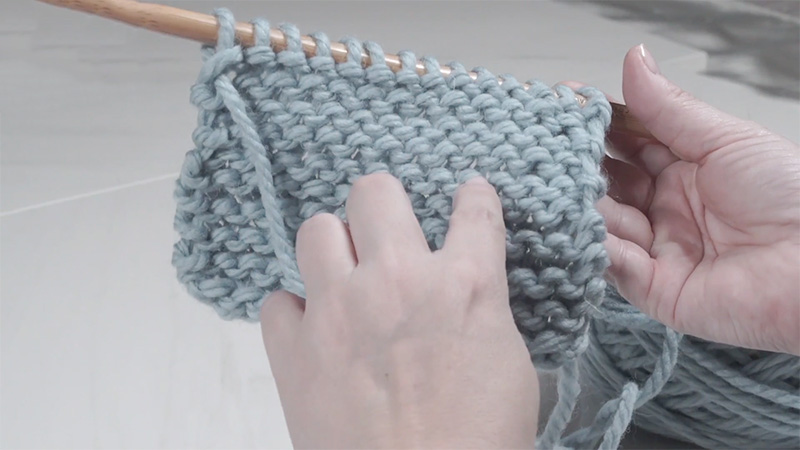
The first row of knitting is typically referred to as the “right side” in knitting. The terms “right side” and “wrong side” are used to describe the two different sides or faces of a knitted fabric.
Here are the reasons why the first row of knitting is called the right side:
Tradition and Convention
Knitting has a rich history that spans many cultures and generations. Over time, certain knitting practices and terminology have become deeply ingrained in the craft.
Calling the first row the “right side” is a tradition passed down through the years, and it helps maintain continuity and consistency in the language used by knitters.
This tradition helps create a sense of community among knitters, as they share a common understanding of terminology and techniques.
Aesthetic Considerations
The “right side” of a knitted fabric is typically the more visually appealing side. This is because most knitting patterns are designed with this side in mind.
The stitch pattern, colorwork, and any decorative elements are often intended to be showcased on the “right side” of the fabric. As a result, the “right side” is where the beauty and intricacy of the design are most apparent.
Pattern Instructions
Knitting patterns play a crucial role in guiding knitters through the process of creating a specific project.
These patterns often include instructions for both the “right side” and the “wrong side” of the fabric.
By designating the first row as the “right side,” pattern writers can provide clear and consistent directions for their designs. This helps knitters follow the pattern accurately and achieve the desired outcome.
Visual Clarity
Using the terms “right side” and “wrong side” provides a clear and standardized way for knitters to communicate about their work.
When discussing techniques, stitch patterns, or design elements, having a common language ensures that knitters can easily understand each other.
Whether in written patterns, verbal instructions, or online forums, the terminology helps prevent confusion and fosters effective communication among knitters.
Seam and Joining Considerations
In many knitting projects, such as sweaters or scarves, the “right side” is intended to be the side that faces outward when the project is finished. This is particularly important when joining pieces together or sewing seams.
By aligning the “right sides” of the pieces, knitters can create a seamless and polished final look, ensuring that any seams or joins are less visible on the exterior of the project.
How You Can Determine the Right Side of Your Knitting?
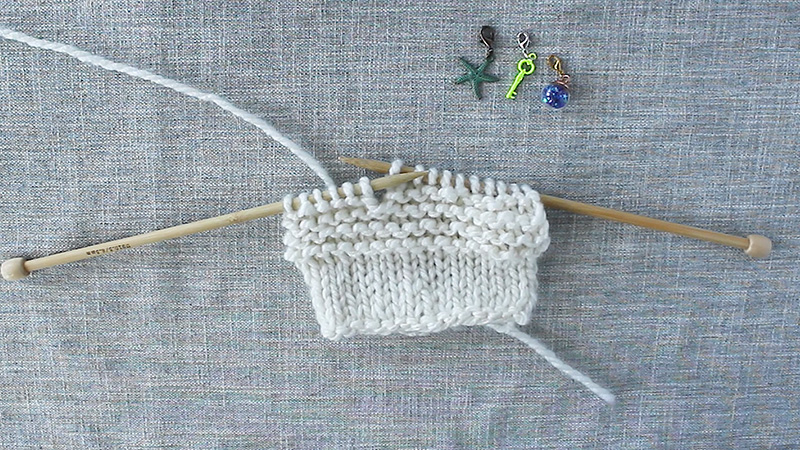
Determining the right side of your knitting is crucial for following knitting patterns and creating a finished project that looks as intended.
Here are some common methods to determine the right side of your knitting:
Pattern Instructions
The easiest way to identify the right side is by referring to the pattern instructions. Most knitting patterns will explicitly state which side is the right side and which is the wrong side. This is the most accurate and foolproof way to determine the right side.
Stitch Pattern
If your knitting project has a specific stitch pattern or design, the right side is often the side where the pattern is most visible and well-defined.
For example, in a cable knit pattern, the right side is where the cables cross and create texture. In lace knitting, the right side is where the lace holes and motifs appear.
Stockinette Stitch
In stockinette stitch, which is a common knitting stitch pattern, the right side has smooth, “V”-shaped stitches, while the wrong side has a bumpy or purl stitch texture.
If you’re not sure which side is the right side, look for the smooth side with the “V” stitches.
Color Changes
If your knitting project involves changing colors, the right side is often the side where you started or completed the color change. This is especially true in stranded colorwork, intarsia, or Fair Isle knitting.
Selvage or Edge Stitch
Some knitters choose to add a selvage or edge stitch to their work, which is a single stitch at the beginning or end of each row that is worked in a different manner, such as slipping the first stitch.
The selvage stitch is typically worked the same way on every row, and it can serve as a visual indicator of the right side.
Yarn Tails
If you have cast on using a long tail cast-on method, you might have two yarn tails hanging from your work—one from the ball of yarn and one from the tail you used for casting on.
The tail from the ball of yarn is typically the one you continue knitting with, and it should be on the same side as the right side of your work.
Visual Inspection
Sometimes, especially with simple patterns or stockinette stitches, you can visually inspect your work to determine the right side.
Look for any characteristics that make one side appear neater or more aesthetically pleasing than the other.
Where Is the Tail on the Right Side of Knitting?
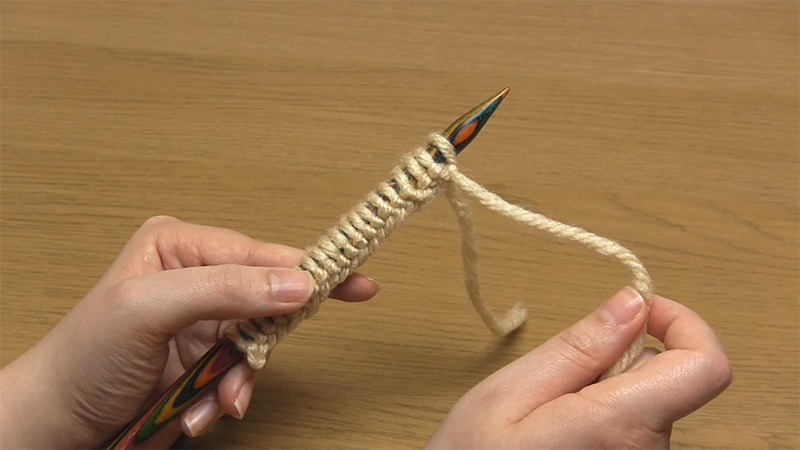
In knitting, the “tail” typically refers to the loose end of yarn that is left over after you’ve cast on stitches at the beginning of your project.
The tail is used to create the initial stitches, and it is usually found on the right side of the work.
Here’s why:
Casting On
When you start a knitting project, you begin by casting on stitches. To do this, you use a length of yarn that includes the tail.
The tail end is the portion of yarn that you leave hanging after you’ve cast on the desired number of stitches.
This tail end is usually on the right side because most knitting instructions start from the right and move to the left.
Working from Right to Left
In many knitting traditions, especially Western-style knitting, you work from right to left across the row.
As you knit each stitch, the working yarn (the yarn attached to the ball) travels from the right side of your work to the left side.
Therefore, it makes sense to have the tail on the right side as it’s the starting point for your project.
Tangle Prevention
Positioning the tail on the right side also helps prevent it from getting tangled with the working yarn as you knit.
When the tail is on the right, it’s less likely to get caught up in your knitting as you pull the working yarn through the stitches.
What Does Right Side Facing Mean in Knitting?
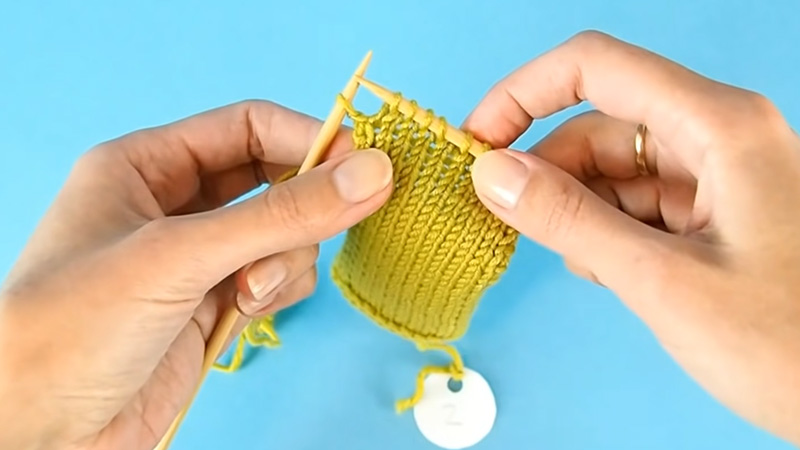
In knitting, “right side facing” refers to the orientation of your work, indicating which side of the fabric should be facing you as you continue with the pattern or instructions.
It is essential to understand this term because it helps ensure that the design or stitch pattern you are creating is correctly executed.
Here’s what “right side facing” means in knitting:
Right Side (RS)
This is the side of your knitted fabric that is intended to be the visible or “front” side of your project.
It’s often the more aesthetically pleasing side and where any stitch patterns, colorwork, or design elements are displayed most prominently. When you wear or display your finished project, the right side should be facing outward.
Facing
In the context of knitting, “facing” simply means that a particular side of your fabric should be turned toward you or facing you as you work.
So, when a pattern or knitting instruction specifies “right side facing,” it means that you should position your fabric in such a way that the right side is the side you can see, and you will be working on the right side of the project.
Knitting Wrong Side After Casting On
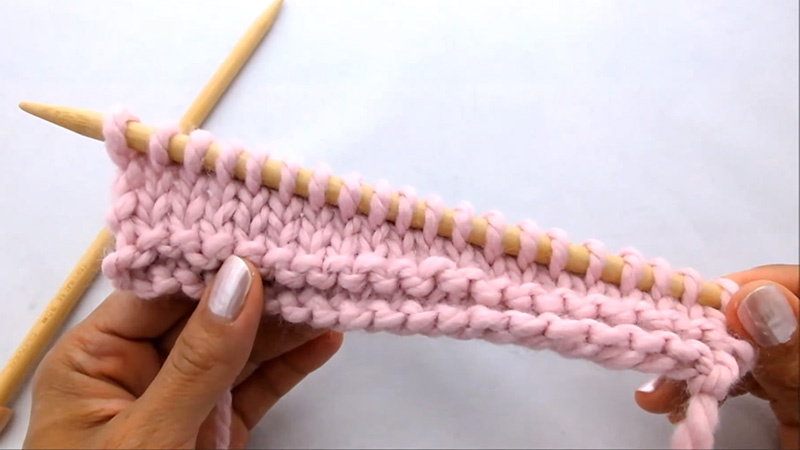
Casting on in knitting is typically done on the right side, and the first row of knitting that follows the cast-on row is also usually worked on the right side.
However, there are instances when you might intentionally work on the wrong side immediately after casting on.
Here are a few scenarios where this might occur:
Garter Stitch
If you’re planning to knit in a garter stitch, which involves knitting every row, you can start with a wrong side row after casting on.
In this case, you would cast on your stitches and then immediately start knitting on the wrong side. This creates a textured fabric with ridges on both sides.
Provisional Cast-On
When using a provisional cast-on, you cast on stitches with waste yarn or a temporary yarn. Afterward, you would often turn the work and begin knitting on the wrong side with your main yarn.
This is commonly done when you plan to graft or join the provisional stitches with live stitches later in your project.
Specific Pattern Instructions
Some knitting patterns or stitch patterns may have unique instructions that call for starting on the wrong side. It’s essential to carefully follow the pattern’s guidance in such cases.
FAQS
Is the right side always the “public” side of the knitting?
Yes, in most cases, the right side is the side of your knitting intended to be the visible or “public” side of your project.
What if I can’t determine the right side of my knitting by looking at it?
If your knitting looks the same on both sides or you’re unsure, refer to your knitting pattern.
Can the right side change during a project?
It’s possible, especially in reversible stitch patterns or if you’re working on a project that requires turning, like a scarf.
Are there any exceptions where the wrong side is intentionally used as the right side?
In some specialized techniques or designs, the wrong side may be used as the right side for creative or functional reasons.
Can I use a stitch marker to mark the right side of my knitting?
Yes, you can use a stitch marker to mark the right side if it’s not obvious. Place the marker on your work’s right side to help you keep track as you knit.
To Recap
The “right side” is not merely a matter of orientation but a pivotal aspect of crafting. It represents the public face of your project, where intricate stitch patterns and designs come to life.
Identifying the right side ensures that your knitting aligns with the pattern’s intended aesthetics. It may be determined through pattern instructions, stitch patterns, or color changes.
While conventionally the right side is where the work begins, certain techniques or reversible patterns can challenge this norm.
Understanding the right side’s significance is essential for producing beautifully finished pieces, making it a fundamental concept every knitter must grasp for a successful and visually appealing knitting journey.
Leave a Reply